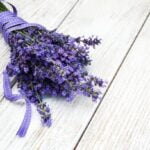Urban gardening is a growing trend in Washington State, offering city dwellers the opportunity to connect with nature and cultivate their own green spaces. In this article, we will explore different ideas for urban gardens in Washington State, focusing on the benefits, plant selection, space maximization techniques, creative container gardening ideas, vertical gardening methods, climate challenges, community engagement, and available resources.
With a focus on sustainability and self-sufficiency, urban gardening in Washington State presents numerous advantages. From providing fresh produce to reducing food miles and promoting greener cities, these gardens play a crucial role in promoting environmental stewardship. By choosing the right plants and utilizing innovative gardening techniques, urban gardeners contribute not only to their well-being but also to the health of their communities.
One of the key factors in successful urban gardening in Washington State is maximizing limited space effectively. Whether it’s through vertical gardening or making use of containers creatively, there are plenty of strategies to make the most out of every square foot. This article will provide practical tips on how to optimize space while still achieving thriving and beautiful urban gardens.
Benefits of Urban Gardening in Washington State
Urban gardening in Washington State offers numerous benefits to urban dwellers, both individual gardeners and the community as a whole. One of the primary advantages of urban gardening is access to fresh, healthy produce right at your doorstep.
By growing your fruits and vegetables, you can ensure that your food is free from harmful pesticides and chemicals. Additionally, cultivating your produce allows you to savor the flavor of freshly picked produce, a luxury that is often lost with store-bought items.
Furthermore, urban gardens contribute to environmental sustainability in Washington State. These green spaces help reduce air pollution by absorbing carbon dioxide and releasing oxygen. They also promote biodiversity by providing habitats for various insects and birds. Urban gardens play a crucial role in mitigating the heat island effect in cities by cooling down the surrounding area through evapotranspiration. Overall, urban gardening is an essential component of creating healthier and more sustainable urban environments in Washington State.
Moreover, engaging in urban gardening has positive impacts on mental health and overall well-being. Tending to plants can be therapeutic and stress-relieving, offering a much-needed break from the hustle and bustle of city life.
The act of nurturing plants also instills a sense of accomplishment as you watch your garden thrive and flourish over time. Furthermore, many urban gardeners in Washington State find solace in connecting with nature despite living in an urban setting, fostering a deeper appreciation for the environment around them.
| Benefits of Urban Gardening | Washington State Data |
|---|---|
| Access to fresh produce | Increase urban green spaces |
| Environmental sustainability | Reduction of air pollution |
| Mental health benefits | Therapeutic effects on gardeners |
Selecting the Right Plants for Washington State Urban Gardens
Urban gardening in Washington State provides a unique opportunity for residents to grow their own food, beautify their surroundings, and connect with nature in urban environments. When it comes to selecting the right plants for urban gardens in Washington State, there are several factors to consider. Whether you have limited space on a balcony or patio, or a larger plot of land, choosing the appropriate plants can help ensure a successful and bountiful harvest.
Suitability for Washington State’s Climate
One of the most important considerations when selecting plants for urban gardens in Washington State is ensuring they are suitable for the local climate. The region’s diverse microclimates can vary significantly from coastal areas to mountainous regions, so it’s crucial to choose plants that can thrive in your specific location. Consider factors such as temperature extremes, precipitation levels, and sunlight exposure when deciding what to plant in your urban garden.
Native and Drought-Tolerant Plants
Incorporating native plants into your urban garden is not only beneficial for supporting local ecosystems but also ensures that your plants are well-suited to the natural conditions of Washington State. Native plants require less water and maintenance once established, making them an excellent choice for sustainable urban gardening. Additionally, selecting drought-tolerant varieties can help conserve water resources and reduce the need for irrigation in times of drought.
Vegetables, Herbs, and Fruit Trees
For those looking to grow their own produce in Washington State urban gardens, there is a wide variety of vegetables, herbs, and fruit trees that can thrive in the region. Cool-season crops like leafy greens, root vegetables, and peas are well-suited to the state’s climate and can be grown successfully in smaller spaces. Herbs such as rosemary, thyme, and sage are also excellent choices for urban gardens due to their compact growth habits and culinary uses.
Fruit trees like apple, cherry, and plum varieties can provide a beautiful addition to urban landscapes while offering fresh fruits for harvest. By carefully selecting plants that are suitable for Washington State’s climate and your specific growing conditions, you can create a thriving urban garden that yields bountiful harvests throughout the growing season.
Tips for Maximizing Space in Urban Gardens in Washington State
Urban gardening in Washington State can be a fulfilling and rewarding experience, but one of the biggest challenges faced by urban gardeners is maximizing space in small city plots. The key to success lies in utilizing every inch of available space efficiently.
One effective way to make the most of limited space is by implementing vertical gardening techniques. By growing plants upwards on trellises, walls, or hanging baskets, urban gardeners can multiply their planting area and create a lush green oasis even in the smallest of spaces.
In addition to vertical gardening, raised beds are another fantastic method for maximizing space in urban gardens in Washington State. Raised beds not only provide a designated area for planting and protect plants from soil compaction, but they also help utilize space more effectively by allowing for closer plant spacing and easier maintenance. These beds can be customized to fit any size or shape available in your urban garden, making them a versatile option for both beginners and experienced gardeners.
Furthermore, interplanting or companion planting is a practical strategy that can help maximize space and improve yields in urban gardens within Washington State. By carefully selecting plant combinations that complement each other’s growth habits and needs, you can optimize every square foot of your garden space.
For example, planting tall tomato plants next to low-growing lettuce allows you to harvest multiple crops from the same area without overcrowding. This technique not only saves space but also promotes biodiversity and reduces the risk of pests and diseases taking over your urban garden.
| Urban Gardening Tip | Description |
|---|---|
| Vertical Gardening Techniques | Growing plants upwards on trellises or walls helps maximize space in urban gardens. |
| Raised Beds | Utilizing raised beds allows for closer plant spacing and more efficient use of available space. |
| Interplanting/Companion Planting | Selecting plant combinations that complement each other helps optimize garden areas for maximum yield. |
Creative Container Gardening Ideas for Urban Settings in Washington State
Container gardening is an excellent option for urban settings in Washington State, where space can be limited, but creativity can flourish. By utilizing containers of various sizes and materials, urban gardeners can still grow a wide variety of plants, from herbs to vegetables to flowers. Here are some creative container gardening ideas for urban settings in Washington State:
Repurposed Containers
One innovative way to approach container gardening in urban areas is to repurpose everyday items into planters. Old buckets, wooden crates, tin cans, or even rain boots can make unique and charming containers for your plants. Not only does this add a creative touch to your urban garden, but it also helps reduce waste by giving new life to old items.
Vertical Gardens
Vertical gardening is another strategy that can maximize space in small urban settings in Washington State. By utilizing walls or fences as growing spaces, vertical gardens allow you to grow more plants without taking up valuable floor space. Hanging baskets, wall-mounted planters, and trellises are all great options for creating a vertical garden in your urban oasis.
Succulent Gardens
Succulents are low-maintenance plants that thrive in the arid climate of Washington State and are perfect for container gardening in urban settings. Their unique shapes and colors add visual interest to any space, making them a popular choice for those looking to create a stylish and sustainable urban garden. Consider planting a variety of succulents in different containers to add texture and diversity to your garden.
With these creative container gardening ideas, urban gardeners in Washington State can transform their outdoor spaces into thriving green sanctuaries filled with life and beauty. Whether you have a small balcony or a tiny patio, there are endless possibilities for growing plants in containers and adding a touch of nature to your urban environment.
Utilizing Vertical Gardening Techniques in Washington State Urban Gardens
Vertical gardening techniques can be a game-changer for urban gardeners in Washington State, especially those with limited space. By utilizing vertical space effectively, you can maximize your plant yield and create a visually appealing garden. Here are some ideas to incorporate vertical gardening into your urban garden:
- Vertical Planters: Install vertical planters on walls or fences to grow herbs, flowers, or even vegetables. This not only saves ground space but also adds a decorative element to your garden.
- Hanging Baskets: Hang baskets from balconies or pergolas to grow trailing plants like tomatoes, strawberries, or beans. Make sure the baskets have proper drainage to avoid waterlogging.
- Trellises and Arbors: Use trellises and arbors to support climbing plants such as peas, cucumbers, and squash. These structures not only save space but also add structure and height to your garden.
In addition to traditional methods like raised beds and containers, incorporating vertical gardening techniques can open up a world of possibilities for urban gardeners in Washington State. Whether you have a small patio or a balcony, there are always ways to make the most out of your space while still enjoying the benefits of gardening.
Plant selection is crucial when it comes to vertical gardening in urban settings in Washington State. Choose plants that are well-suited for vertical growth and do not require a lot of horizontal space. Consider factors like sunlight requirements, wind exposure, and water needs when deciding which plants to grow vertically. By selecting the right plants for your vertical garden, you can ensure a successful and productive growing season.
Overall, incorporating vertical gardening techniques into your urban garden in Washington State can help you make the most of limited space while adding visual interest to your outdoor area. Get creative with how you use walls, fences, and other structures to grow a variety of plants vertically. With careful planning and maintenance, you can create a thriving vertical garden that enhances both the aesthetic appeal and productivity of your urban oasis.
Addressing Climate Challenges in Washington State Urban Gardening
Urban gardening in Washington State poses unique challenges due to the diverse climate conditions throughout the state. From the temperate climate of the Puget Sound region to the arid conditions of Eastern Washington, urban gardeners must be adaptable and strategic in their approach. Here are some tips for addressing climate challenges in urban gardening across Washington State:
- Researching Microclimates: One key strategy for overcoming climate challenges in urban gardens is to understand the microclimates within your specific location. Different areas within Washington State may have varying levels of sunlight, wind exposure, and precipitation. By identifying these microclimates, you can better tailor your planting choices and garden layout.
- Choosing Resilient Plants: Selecting plants that are well-suited to Washington State’s climatic conditions is essential for a successful urban garden. Consider native plants or drought-resistant varieties that can thrive in the region’s fluctuating temperatures and precipitation levels. Some resilient plant options include lavender, sage, succulents, and ornamental grasses.
- Implementing Season Extension Techniques: Washington State’s distinct seasons can present challenges for year-round gardening in urban settings. To prolong your growing season and protect delicate plants from harsh weather conditions, consider utilizing season extension techniques such as row covers, cold frames, or hoop houses. These methods can help you extend your harvests well into the fall and even winter months.
Despite the climate challenges that urban gardeners may face in Washington State, with careful planning and adaptation, it is possible to cultivate thriving gardens throughout the state. By understanding microclimates, selecting resilient plants, and implementing season extension techniques, you can create a productive and sustainable urban garden that flourishes in spite of Washington’s diverse climate conditions. With dedication and creativity, urban gardening enthusiasts can overcome these challenges and enjoy a bountiful harvest year-round.
Community Engagement and Support for Urban Gardens in Washington State
Community engagement and support are vital components of successful urban gardens in Washington State. One way to foster community involvement is by creating a shared garden space where neighbors can come together to plant, nurture, and harvest crops. This not only helps build a sense of community but also allows for the sharing of knowledge and resources among participants. Community gardens have been proven to improve social connections, promote healthy eating habits, and even reduce crime in urban areas.
Another way to engage the community in urban gardening is by hosting workshops, events, or classes that educate residents on sustainable gardening practices. By providing opportunities for hands-on learning, individuals can gain the knowledge and skills needed to start their own gardens at home. Additionally, organizing community workdays where volunteers come together to clean up and maintain public garden spaces can help instill a sense of pride and ownership in the community.
Seeking support from local businesses, organizations, or government agencies can also greatly benefit urban gardening initiatives in Washington State. Partnering with local nurseries for discounted plants or supplies, collaborating with schools or youth groups for educational programs, or securing grants from local government bodies can provide valuable resources for establishing and maintaining urban gardens. By involving various stakeholders in the planning and execution of urban gardening projects, communities can create sustainable and thriving green spaces for all residents to enjoy.
Resources for Starting Your Own Urban Garden in Washington State
Urban gardening in Washington State is not just a trend, but a movement towards a more sustainable and connected community. As more and more people seek to grow their own food and beautify their surroundings, urban gardens have become an integral part of city life. With limited space and unique climate challenges, urban gardeners in Washington State need to be creative and resourceful in their approach.
When starting your own urban garden in Washington State, it’s important to gather the right resources to ensure success. Local nurseries, online gardening forums, and community organizations can provide valuable information on what plants thrive best in the region, tips for maximizing space, and techniques for dealing with the Pacific Northwest’s diverse climates. The abundance of resources available makes it easier for aspiring urban gardeners to get started and expand their knowledge.
By tapping into the wealth of resources available in Washington State, you can transform your urban space into a thriving garden oasis. Whether you’re looking for advice on plant selection, space-saving strategies, or innovative gardening techniques, the support system within the community is ready to assist. As urban gardening continues to grow in popularity across Washington State, the possibilities for creating beautiful and sustainable spaces are endless.
Frequently Asked Questions
What Plants Are Best for Urban Gardening?
When it comes to urban gardening, the best plants are those that thrive in small spaces and can withstand the unique challenges of city environments. Some popular choices include herbs like basil and mint, leafy greens such as lettuce and kale, compact vegetables like cherry tomatoes and peppers, as well as hardy flowers like marigolds and pansies.
How Do I Start a Small Urban Garden?
Starting a small urban garden can be an exciting and rewarding experience. First, assess the available space – whether it’s a balcony, rooftop, or window sill. Then, consider factors like sunlight exposure, water source, and soil quality.
Next, choose the right containers or pots for your plants and select suitable varieties based on your location and preferences. Finally, get started by planting seeds or seedlings, watering regularly, and providing proper care.
How Do You Maintain an Urban Garden?
Maintaining an urban garden requires consistent effort to ensure healthy growth and abundant harvests. Regular tasks include watering plants as needed (taking care not to overwater), checking for pests and diseases, fertilizing appropriately throughout the growing season, pruning or harvesting when necessary to promote new growth, and keeping an eye on overall plant health.
Additionally, staying organized with a gardening schedule can help ensure that all tasks are completed timely for optimal results.

Welcome to my gardening blog! I am passionate about plants and enjoy sharing my knowledge and experiences with others. In this blog, I will write about everything related to gardening, from tips on how to get started to updates on my own garden projects.





